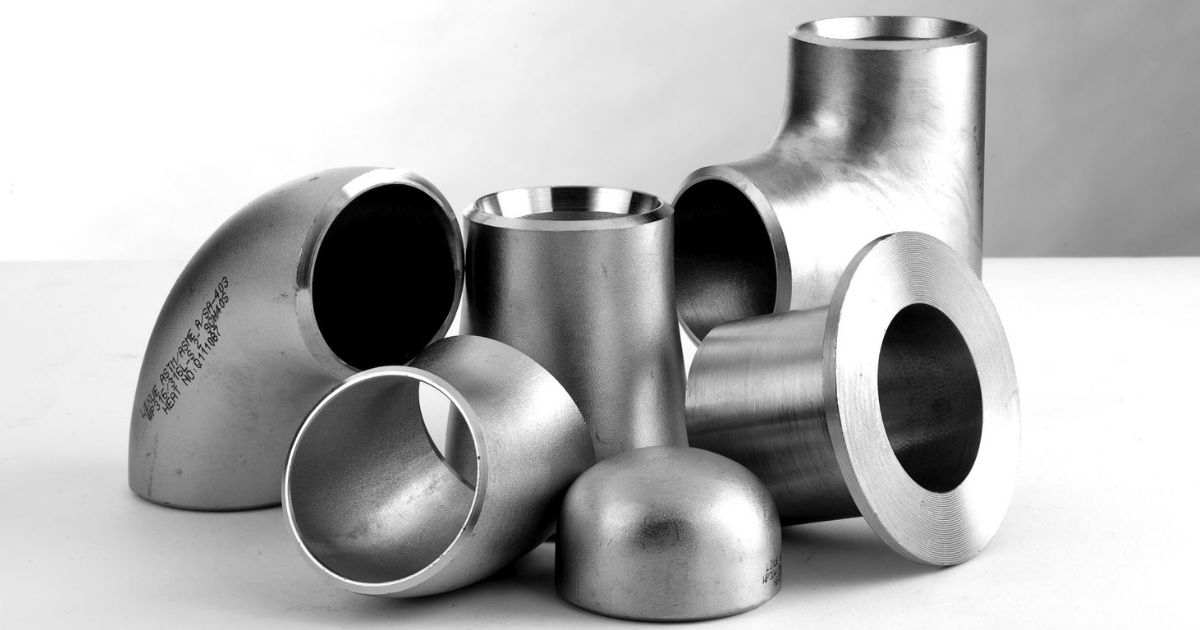Pipe fittings play a critical role in plumbing, construction, and industrial applications, enabling secure connections between pipes. Understanding pipe fitting sizes and their dimensions is essential for ensuring compatibility and functionality in your projects. In this comprehensive guide, we’ll break down the key aspects of pipe fitting size charts, including the types of fittings, sizing standards, and how to interpret size charts accurately.
What Are Pipe Fittings?
Pipe fittings are components used to join, redirect, or terminate pipes. They are available in various materials, such as stainless steel, PVC, brass, and copper, catering to diverse applications. Common types of pipe fittings include:
- Elbows: For changing pipe direction (e.g., 45° or 90° angles).
- Tees: For branching pipelines.
- Reducers: For connecting pipes of different diameters.
- Couplings: For joining two pipes.
- Caps and Plugs: For sealing pipe ends.
Each fitting type has unique dimensional requirements and is often listed in size charts to aid in selection.
Understanding Pipe Fitting Sizes
Pipe fitting sizes are typically represented in terms of:
- Nominal Pipe Size (NPS): Refers to the standard size designation for pipes and fittings in the U.S.
- Diameter Nominal (DN): Metric equivalent to NPS, commonly used internationally.
- Outer Diameter (OD): The external diameter of the pipe or fitting.
- Inner Diameter (ID): The internal diameter, affecting flow capacity.
- Wall Thickness: Represented by the schedule number (e.g., SCH 40 or SCH 80).
Sizing Standards
Two main standards govern pipe fitting sizes:
- ANSI/ASME Standards: Common in the U.S., specifying dimensions for NPS and schedules.
- ISO Standards: Used internationally, focusing on DN and wall thickness classes.
How to Read a Pipe Fitting Size Chart
A typical pipe fitting size chart includes dimensions for various fitting types. Let’s break down how to read one:
Key Elements of a Size Chart
- NPS/DN: Indicates the nominal size.
- Fitting Type: Specifies the type (e.g., elbow, tee).
- Dimensions: Lists OD, ID, and length or height of the fitting.
- Weight: For fittings where weight is a factor.
- Material Compatibility: Indicates suitable materials for each fitting.
For example:
| NPS/DN | Fitting Type | OD (mm) | ID (mm) | Length (mm) |
|---|---|---|---|---|
| 1”/25 | Elbow (90°) | 33.4 | 27.9 | 38 |
| 2”/50 | Tee | 60.3 | 52.5 | 76 |
Common Pipe Fitting Dimensions
Elbows
| Size (NPS) | OD (mm) | Center-to-End (mm) |
| 1” | 33.4 | 38 |
| 2” | 60.3 | 76 |
Tees
| Size (NPS) | OD (mm) | Branch OD (mm) | Length (mm) |
| 1” | 33.4 | 27.9 | 76 |
| 2” | 60.3 | 52.5 | 152 |
Reducers
| Size (NPS) | Large OD (mm) | Small OD (mm) | Length (mm) |
| 1” x ½” | 33.4 | 21.3 | 51 |
| 2” x 1” | 60.3 | 33.4 | 76 |
Pipe fitting sizes are typically represented in terms of:
- Nominal Pipe Size (NPS): Refers to the standard size designation for pipes and fittings in the U.S.
- Diameter Nominal (DN): Metric equivalent to NPS, commonly used internationally.
- Outer Diameter (OD): The external diameter of the pipe or fitting.
- Inner Diameter (ID): The internal diameter, affecting flow capacity.
- Wall Thickness: Represented by the schedule number (e.g., SCH 40 or SCH 80).
Pipe fittings are components used to join, redirect, or terminate pipes. They are available in various materials, such as stainless steel, PVC, brass, and copper, catering to diverse applications. Common types of pipe fittings include:
- Elbows: For changing pipe direction (e.g., 45° or 90° angles).
- Tees: For branching pipelines.
- Reducers: For connecting pipes of different diameters.
- Couplings: For joining two pipes.
- Caps and Plugs: For sealing pipe ends.
Each fitting type has unique dimensional requirements and is often listed in size charts to aid in selection.
Sizing Standards
Two main standards govern pipe fitting sizes:
- ANSI/ASME Standards: Common in the U.S., specifying dimensions for NPS and schedules.
- ISO Standards: Used internationally, focusing on DN and wall thickness classes.
How to Read a Pipe Fitting Size Chart
A typical pipe fitting size chart includes dimensions for various fitting types. Let’s break down how to read one:
Key Elements of a Size Chart
- NPS/DN: Indicates the nominal size.
- Fitting Type: Specifies the type (e.g., elbow, tee).
- Dimensions: Lists OD, ID, and length or height of the fitting.
- Weight: For fittings where weight is a factor.
- Material Compatibility: Indicates suitable materials for each fitting.
Factors to Consider When Choosing Pipe Fittings
When selecting pipe fittings, consider the following:
- Material Compatibility: Ensure the fitting material matches the pipe material to avoid corrosion or leakage.
- Pressure Rating: Check the pressure rating for high-pressure systems.
- Temperature Resistance: Ensure the fitting can withstand the operating temperature.
- Application: Choose fittings suited to the intended purpose (e.g., industrial, residential).
Benefits of Using a Pipe Fitting Size Chart
- Accuracy: Prevents errors in fitting selection.
- Efficiency: Saves time during procurement and installation.
- Standardization: Ensures compliance with industry norms.
Conclusion
Understanding pipe fitting size charts is crucial for selecting the right components for your project. Familiarize yourself with the standards, dimensions, and specifications to ensure seamless connections and optimal performance. By using a detailed size chart, you can make informed decisions and avoid costly mistakes.
